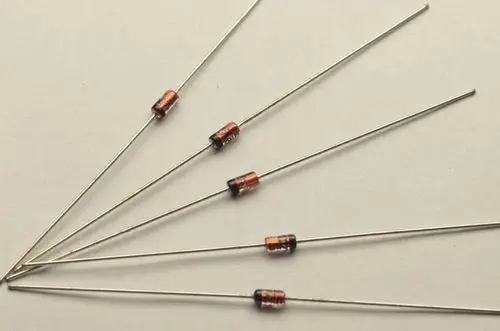Engineers design a
Zener diode as a specialized type of diode that operates in the reverse breakdown region. A Zener diode is different from a regular diode.
A regular diode only lets current flow in one direction. In contrast, a Zener diode can conduct current in both forward and reverse directions. This unique property makes it particularly useful in various electronic circuits, including linger amplifiers.
The function of a Zener in a Linger Amplifier
In a linger amplifier, a Zener serves several critical functions:
1. Voltage Regulation
The main job of a Zener diode in any circuit, like a linger amplifier, is to regulate voltage. It maintains a constant voltage across its terminals, regardless of changes in the current flowing through it. This happens because the Zener diode can carry a lot of current. This occurs when the reverse voltage goes above a specific level called the Zener voltage (Vz).
2. Stable Biasing
In transistor amplifiers, including lingering amplifiers, Zener diodes provide a stable biasing voltage. This is crucial for maintaining the amplifier's performance under varying operating conditions.
The Zener diode keeps a steady bias voltage. This helps stabilize the amplifier's operating point. As a result, the amplifier performs better and is more reliable.
3. Reference Voltage
In some linger amplifier circuits, a Zener diode can be used to provide a reference voltage. This reference voltage is essential for setting the operating point of the amplifier and ensuring that it functions correctly. The Zener diode's ability to maintain a constant voltage makes it an ideal choice for this application.
4. Protection Against Overvoltage
Zener diodes can also protect the amplifier circuit from overvoltage conditions. When the voltage across the Zener diode goes above its Zener voltage, it conducts strongly. This action keeps the voltage at a safe level. This protects sensitive components in the amplifier from damage due to excessive voltage.
How It Works
The Zener diode operates by utilizing the reverse breakdown phenomenon. When someone applies a reverse voltage to the diode, the diode initially blocks the current. Once the voltage goes above the Zener voltage, the diode starts to conduct a lot.
This allows a large amount of current to flow. This flow keeps a steady voltage across the diode. This steady voltage is important for its regulation function.
Conclusion
In summary, a Zener diode is important in a linear amplifier. It helps with voltage regulation, and stable biasing, and provides a reference voltage.
It also protects against overvoltage. Its ability to keep a steady voltage across its terminals makes it a key part of the amplifier. This helps ensure the amplifier works reliably and efficiently.

